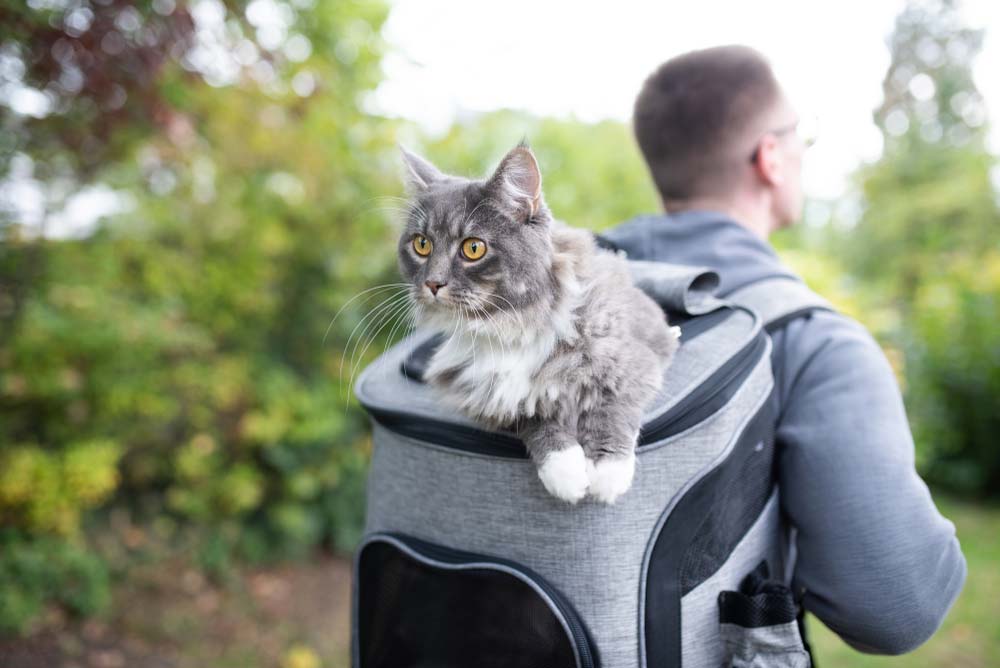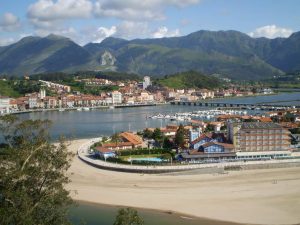In recent years, many people have chosen to do the Camino de Santiago accompanied by your pet to have company during long days of walking.
If you are one of these enthusiasts, there are certain things you should know about this question about how to do it with your pet. You should know that there are regulations and limitations What you should know so that you don’t have any major problems along the way.
Next, we will give you the best tips so that your trip is a success and you and your dear friend enjoy it.
Índice de contenidos
Tips for doing the Camino de Santiago with pets
Next, we will give you a series of recommendations that you should keep in mind so that the trip is a positive experience for both of you.
Although you can search for information yourself, the companies to do the Camino de Santiago de Compostela They have trained personnel to give you all the information you require. They will inform you about everything related to doing the hike with your pet, from accommodation, permits, passes, transportation, whatever you need.
Visit to the vet
The first thing you should do before starting this route is take your pet to the vet and evaluate if your furry friend has the appropriate physical conditions to travel the entire path.
Remember that we are not talking about 3 kilometers or going for a run in the park. It involves spending many days away from home, walking, with possible unstable weather conditions and without the comforts to which he may be accustomed.
If your vet says yes, start choosing the route, otherwise it is best to leave your pet at home to avoid problems.

It is not recommended to do the trail with older or very young pets., they must be of adult age. Of course, without illnesses or limitations. However, there are always alternatives such as backpacks or small strollers to carry them when they are exhausted.
Choose the route
As you know, There are several main routes to do this route. We show you some:
- The most popular, and you will see it anywhere guide to the French Camino de Santiago, andIt starts in Saint-Jean-Pied-de-Port, France, and crosses the provinces of Navarra, La Rioja, Burgos, Palencia, León and Lugo until it reaches Santiago de Compostela. They are around 800 km long.
- The Northern Way. Follow the northern coast of Cantabria, Asturias until you reach Galicia. There are about 35 stages of the Camino de Santiago del Norte, where you can enjoy impressive landscapes and a fresher experience during the 825 km journey.
- Vía de la Plata. It starts in Seville and crosses the country towards the north until it connects with the Camino Frances. This is the longest route, it is approximately 1000 km.
- If you take a map of the Portuguese Way, you will see that there are two routes. One begins in Lisbon and the other in Porto, both cross Portugal to the North and enter Spain to continue to Santiago. Many pilgrims opt for the shorter variant which is the Portuguese Way from Tui, starting from the city next to the Miño River.
It’s necessary that know the details of each of these routes, if it is a mountainous path, if it is mainly a road, if you must cross large plains, climb… this data will help you determine which is the most suitable route for you and your pet.
Those who have already done the Camino de Santiago with their pet, They recommend the French Way.
Something important that you should keep in mind, that whatever the route chosen, you can incorporate your pet on the last journey, which is equivalent to 100 kilometers. For this there are specialized agencies in the Camino de Santiago from Sarria organized who take care of it.
Do internships
A few weeks before, it starts to take long walks with your pet of approximately 20 kilometers. This will help you know their behavior in these types of situations.
Alternate with short but intense workouts, such as going up and down stairs or avoiding obstacles. Watch your breathing and study the amount of water you ingest during these sessions.
Pet friendly accommodations
Depending on the route you choose, you will have more possibilities of staying in hotels, hostels, and communal establishments to rest. make sure that accept pets. Likewise, make sure that the taxi company or means of transportation that you choose to return home once you have finished the Camino de Santiago allows you to bring animals.

Prepare a backpack with everything you may need
Just as you prepare a bag with all your requirements, if you are going to do the Camino de Santiago with your pet, he or she will also need a basic kit.
- Identification documents and veterinary vaccination card.
- Feeder and drinker portable.
- Much water, food assembled in small packages, and prizes to stimulate it.
- your blanket or a mat so you can rest at night.
- Raincoat and towel to dry it in case it rains.
- Un toy.
- Scholarships to collect your waste.
- Harness and belt so you can walk without needing to hold the leash all the time.
- Vaseline to keep your pads hydrated at the end of the daily walk.
- Repellent for parasites.
- Medication, gauze, betadine and tweezers in case your pet gets something stuck in its paw.
Guarantees your breaks
Pay attention to their behavior. Just as you feel tired, your pet will be too. If you notice that is panting more than normal, slowing down when walking, or pulling the mail back, it’s time to stop.
During the day, make small stops to drink water and give some prizes. These will serve as breaks for the animal. Try to find good spaces for rest and for them to sleep well all night
The tour begins early in the morning to prevent the midday and afternoon sun from catching them in uncovered areas.
Canine credential
Since 2018, the Camino Animal Protection Association created the canine credential. This is a document that you can stamp at each stop as proof that your pet has passed through there on the way to Santiago de Compostela.

Regulations for dogs during the route to Santiago de Compostela
- Your pet must have a microchip with all your information.
- have your vaccinations up to date. In particular, the rabies vaccine certificate, issued at least 21 days in advance.
- Certificate endorsed by the veterinarian that has the conditions to make the tour.
- Must have the pet passport of the European Union.
- Take your leash, especially when traveling through populated areas or in parts of the road where there are people and other animals.









